Contents
The traditional blue-purple hues of the grape bunch are associated with the south. In the yard where a strong and beautiful Zabava vine grows, decorated with weighty bunches, it will become more comfortable with a light atmosphere of a warm coast. An early ripe table hybrid of grapes is able to grow and ripen in the middle lane, you just have to take care of its shelter for the winter.
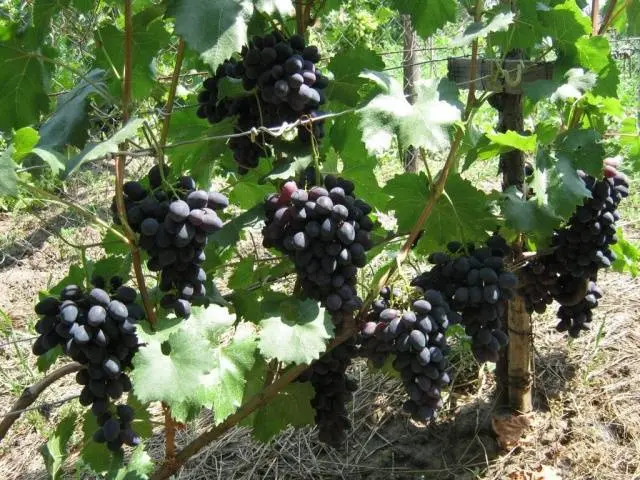
Characterization
The popularity of a grape variety depends on its qualities. Became a favorite of growers and Zabava. Grapes have a very early ripening period. Depending on the weather conditions and the quality of the agricultural background, the berries of the variety ripen in 100-120 days. A table hybrid of black grapes Zabava was developed by an amateur breeder from Ukraine, Zaporozhye, V.V. Zagorulko by crossing well-known early table varieties: white-fruited Lora grapes (later the variety was renamed: Flora) and blue-fruited – Kodryanka. Fun has inherited the best features of parental forms. Sometimes the variety is called Laura black.
Grapes Fun endures frosts down to -21 0C, requires careful winter shelter. The variety is resistant to oidium and gray rot, susceptible to mildew. Three-time prophylaxis keeps the vine bush healthy. A high percentage of sugar content and delicate skin attract wasps, from which the clusters protect with fine-mesh nets.
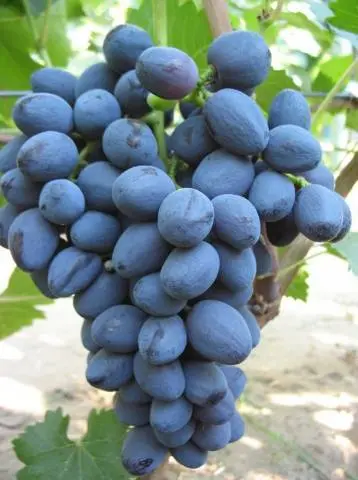
Vine Features
The Zabava vine on powerful own-rooted bushes ripens well along its entire length, it can spread up to 3-4 m already in the second year of growth. The variety bears fruit in a year or two after planting. According to gardeners, in the second year up to 12 or more clusters appear on the vine, of which at least half should be removed. The cuttings of the variety have a high survival rate when rooted or grafted. Even 1-eye fragments of Zabava vines develop. On old powerful rootstocks, fruiting is faster.
With an optimal load on the bush – up to 20-30 bunches, in the southern regions the berries ripen from the beginning or middle of August. Bunches of Zabava grapes for a long time, more than a month, keep on strong stalks on the vine, without losing the beautiful appearance of the berries, texture, elasticity and taste. They can only dry out, become raisined, because the berries gain a lot of sugar. In a week of rainy weather, the berries are preserved, do not crack. Peasing in the Zabava variety is possible if it rains during the flowering period.
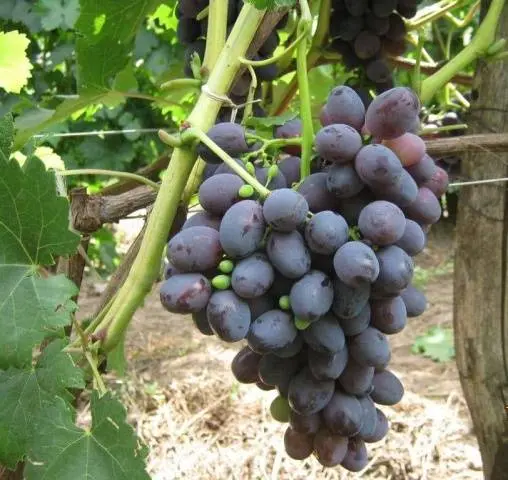
Description
Own-rooted grape bushes of the Zabava variety are vigorous. Most of the shoots are 60-80% fruitful. Five-lobed leaves with a finely dissected border, dark green above.

The flowers of the variety are bisexual, self-pollinated. Large cylindrical-conical clusters of medium density, on average, weight 700-800 g, with a good agricultural background, the mass increases to 1-1,5 kg. The first, signal, bunches weigh 300-500 g.
Oblong, oval berries of the Zabava hybrid are large, weighing 10-11 g, 32-35 x 20-22 mm in size. On the dark blue skin, an abundant wax coating is clearly visible. It is thin, eaten almost imperceptibly. Dense pulp is juicy, crispy, sweet, with a pleasant dessert taste.
Advantages
According to the characteristics of Zabava grapes, it has many advantages over other early ripe table forms:
- Harmonious taste of dessert destination;
- Stable productive fruiting;
- Excellent commercial performance;
- Good transportability;
- High survival rate of cuttings;
- Resistance to oidium and gray mold.
Disadvantages gardeners consider the average frost resistance and susceptibility to mildew.
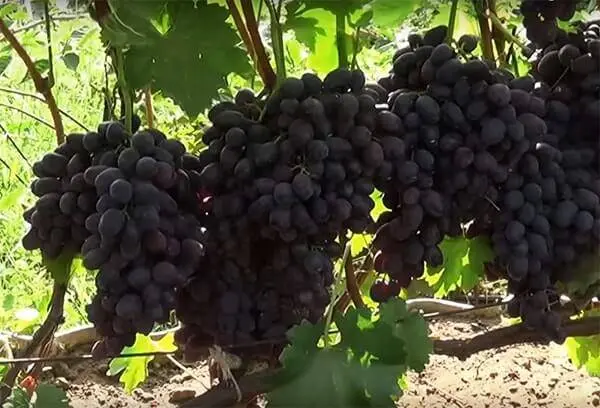
Cultivation
The Zabava grape variety is propagated by cuttings, rooting them and planting or grafting. The hybrid form is easily combined with most rootstocks.
autumn cuttings
Lignified cuttings are cut in autumn from the fruit-bearing vines of the Zabava variety, a straight segment of a branch is chosen, from 12-15 cm long. In order to distinguish the bottom and top of the segment, notches are made on the lower part with a knife. Then the chibouks are placed in polyethylene and sent to a cool place – in a dry basement or in a refrigerator. Rooting begins in February or early March.
- Make a thin cut from the bottom of each shank and soak for two days, changing the water several times;
- During this time, containers are prepared: up to 20 cm high, 10-15 cm wide;
- For the substrate, turfy soil, humus, sawdust and sand are mixed in a ratio of 1: 1,5: 1: 0,5. The mixture is poured with a solution of 1,5 g of ammonium nitrate and 3 g of superphosphate per 1 liter of water;
- Cuttings are planted so that 2 eyes remain on top;
- The containers are installed in small greenhouses or each cutting in a common container is covered with a glass jar;
- Before the shoots appear, the greenhouses are ventilated daily and the cuttings are sprayed with water, keeping the substrate moderately moist.
Before planting, rooted cuttings are taken out to fresh air for hardening. Zabava variety seedlings are moved to a permanent place when the air warms up to 15 0C, and soil – up to 10 0C at a depth of 20 cm.
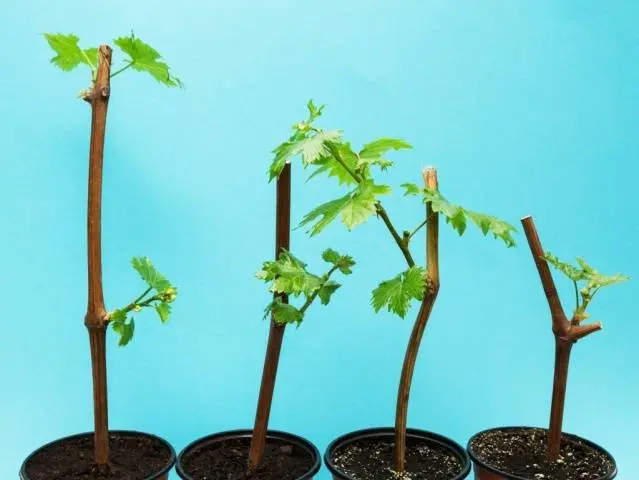
Summer cuttings
In the southern regions, summer cuttings of Zabava grapes are also rooted, planting them in the fall. In the climate of the middle lane, autumn planting is unsuccessful, rooted shoots must be stored in a frost-free room.
- Root segments of the vine Fun with 2 leaves: the lower one is torn off, and the third part of the plate is removed on the upper one;
- The substrate is prepared, as for autumn cuttings, but the bottom of the shank is planted in a layer of sand 2-3 cm, poured over the soil. Planted also in perlite;
- The greenhouse should have high humidity, the temperature should not exceed 30 0C.
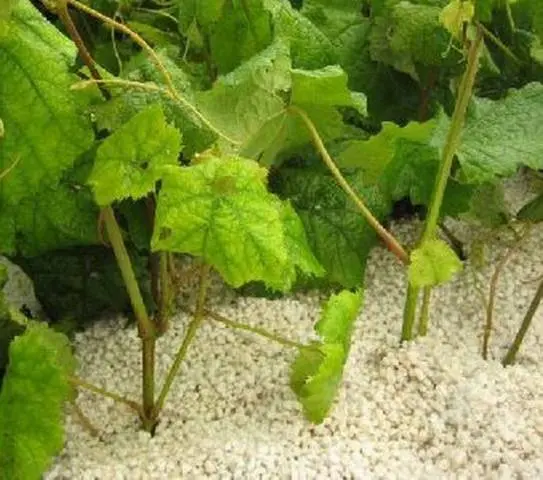
Landing
Under the conditions of the middle lane, Zabava grapes are placed along the buildings on the south side, retreating from other plants 2,5 m. When planting, you can immediately install supports so as not to injure the surface vine root system later.
- They dig a spacious hole measuring 0,8 x 0,8 x 0,8 m;
- A drainage layer of 15-20 cm is laid on the bottom;
- Northern soils are not always suitable for Zabava grapes, therefore, in addition to complex minerals, 2 parts of humus or 20-25 kg of EM-compost preparation per cubic meter are added to the upper fertile layer;
- Zabava grape sapling should remain in a small – 5-10 cm deepening, which will serve for irrigation;
- From above the soil is mulched.
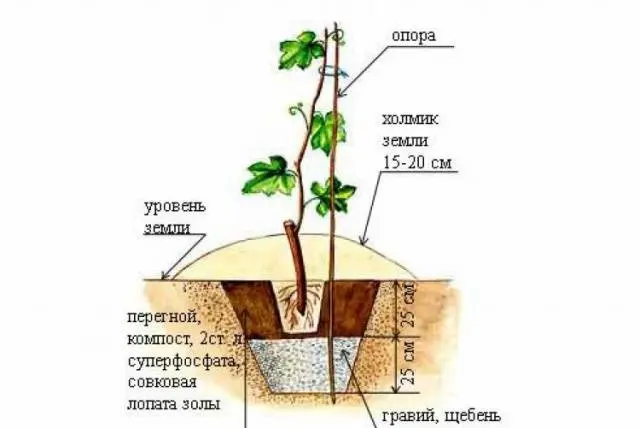
Care
A vigorous bush of grapes is watered up to 4-5 times during the growing season, 30-40 liters each: after bud break, before and after flowering, in the pea phase and before winter shelter. Autumn watering is increased to 60 liters. Zabava grapes are fertilized in the spring with nitroammophos at the rate of 30–40 g per 1 sq. m. Every 2-3 years, grape bushes are fed with humus, pouring it into trenches alternately on both sides of the hole.
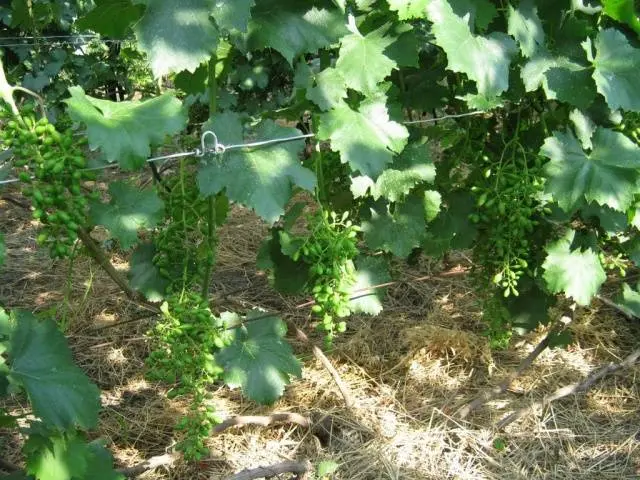
In autumn, preparing the vines for shelter, the grapes are cut into 6-8 buds. They make sure that the bush is loaded with no more than 45 eyes. In summer, one bunch is left for one shoot for better ripening.
The most time-consuming process is the preparation of Zabava vines for the winter. After pruning, slate, thick, durable cardboard, roofing material are laid on the ground in order to lay connected branches on it. From above they cover with last year’s straw, to which mice are indifferent, with dry foliage, with a film. Some gardeners prefer to dig in the grapes with soil.
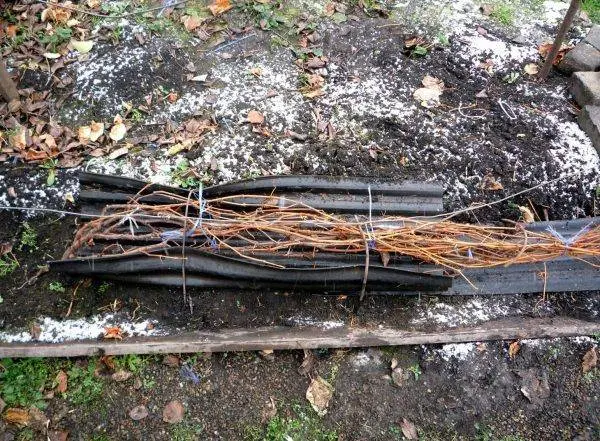
To prevent fungal diseases, the Zabava variety is sprayed with fungicides in early spring, before and after flowering.
An unpretentious vine will successfully develop on the site, delight with picturesqueness and a sweet harvest.









